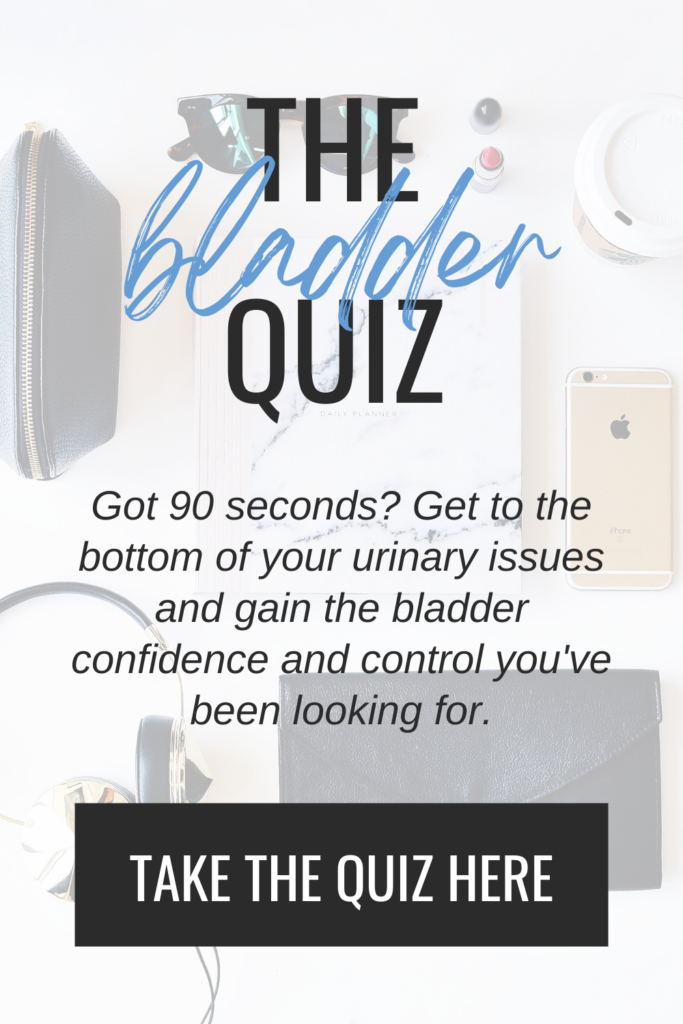Here I am in my office at the hospital. No one has sat on this plinth for weeks because of COVID-19. All of my appointments have been over the phone, and as a physical therapist, that means excessive hand waving and frustration over not being able to explain the things that are so much easier to show in person.
Quarantine has thrown all of us for a loop in some way or another. I figure there are a third of us thriving, a third of us barely surviving, and the last third are in the middle, bouncing between the positive and negative with each day (or hour) that passes. I’m seeing this in people’s emotional, spiritual, and mental health, but I’m especially noticing it in my patients’ pelvic floors.
While treating things like urine leakage, pelvic pain, prolapse, and diastasis over the phone, I’m finding myself sharing the same tips over and over again. Being home more than normal places many of us in a unique situation that can either hinder or help pelvic floor health. The recommendations I’m giving my people are anything but profound, but it’s often the basics that we forget when we’re thrown for a loop like this. I’d like to give you a little insight to the conversations I’m having with my patients on the regular, and I hope they help you just as much.
Tip #1: Just because the bathroom is right there doesn’t mean you need to use it right away.
If you’re stuck at home, then you have better bathroom access now than even before. Waiting for work breaks or finding yourself at the opposite end of the department store is currently a thing of the past. So for many people, that means the bladder is not being challenged to hold large amounts of liquid. You know that saying “if you don’t use it, you lose it”? Well, the bladder abides.
The bladder has an imaginary line that sends a message to the brain saying “I have to go!” as soon as fluid hits that line. Waiting to go after that first urge can essentially raise the line, but going before or as soon as you get that urge can actually lower it. The lower your line, the more frequently you will go. Make sense?
It is normal to urinate 6-10 times a day.
If you find that you’re going to the bathroom more frequently than usual, it maaaaay just be because you’re not challenging your bladder to use its full capacity, so your line is lowering and your brain is getting the “I have to go” message stronger and more often.
My tip inside a tip- if you get the urge to urinate but you know it hasn’t been that long since the last time, try to distract yourself with some deep breathing. If that doesn’t work, even a few kegels are known to turn off the need to pee. Both of these strategies can help bring your line back up to it’s rightful place.
Tip #2: Relax your jaw, shoulders, and pelvic floor.
I’m not in the situation of schooling kids at home, but from what I hear, it’s a nightmare complete with common core math and tech issues. No. Thank. You. Whether you’re spending your time teaching your littles the RIGHT way to carry the one or not, it’s likely that stress and anxiety are a reality in this trying season.
As women, we carry our tension in three places- the jaw, shoulders, and pelvic floor. The first two are easy to relax. For the jaw, lightly clench your teeth, then let your chin hang. In the shoulders, raise them to your ears, then let them lower to the floor. But the pelvic floor…that one can be a little trickier.
Pelvic floor tightness is not a good thing. In fact, it’s one of the primary causes of most pelvic floor dysfunction.
Similar to the jaw and shoulders, I find that tightening the muscles first is a great way to locate them… then relax them. So, I recommend starting with a mini kegel. This is not your strongest kegel ever, but just enough to feel the squeeze in your vagina and anus. Then…let it drop. This is not a push! I repeat! THIS IS NOT A PUSH! It’s just letting your muscles float towards the floor. Then try to keep them there as you go about your day. I recommend checking in again with that same sequence every hour.
If you’d like even more tips on how to relax the muscles down there, you can download my FREE GUIDE on How to Relax the Pelvic Floor here.
Tip #3: Don’t push when you poop.
Raise your orange-colored-cheeto-dust fingers in the air if quarantine snacks have gotten the best of you. Eating poorly + stress hormones = constipation for a lot of people, and if you’re spending a ton of time pushing on the toilet, you can be damaging your pelvic floor.
I have a free guide on How to Number Two where I go into depth on how to poop properly. You can snag that here, but let me give you the cliff notes.
First, squatty potties are legit. I don’t like the look of them in my bathroom so I use a cute ikea stool, but anything you can place your feet on that puts your knees above your hips like you’re squatting will work. This position allows the pelvic floor to relax better and makes an easier route to do the doo.
Next, check in and make sure your muscles are relaxed. That little trick I taught you in Tip #2 where you do the mini kegel then let it go? Do that before you poop so that there’s nothing holding you back.
Finally, take your time. It’s called a rest room for a reason. Rushing to get everything out before the next Netflix episode kicks in should not be the goal here. The body tends to know what it wants and when it wants it, so give it the space to make that call. I recommend spending 5 minutes sitting on the toilet. If you still haven’t gone in that time, get up, drink a hot beverage, do a little moving like stretching or air squats, and try again later when the feeling hits.
Tip #4: Give yourself grace.
I can’t tell you how many patients I’ve called who start the conversation by admitting failure to do all their exercises. Girlfriend…I get it! As I mentioned above, everyone is affected by this time differently, and sometimes things aren’t making the top priority list. Like showering. #guilty
Kegels aren’t necessarily important in this time.
Did you move today? Did you do an activity that made you joyful? Did you nourish your body and/or mind with something good? This is the stuff that matters right now. The pelvic floor is oddly and awesomely connected to the brain, so if you’re happy, the area down there is more likely to be happy as well.
As I write this, it feels like there’s a light at the end of the tunnel. Talk of businesses opening again is on the horizon and I’m slowly getting ready to trickle patients back in to the clinic. These are crazy and unique times we’re in, but let me remind you that we’re all in this together. No one is exempt. And I’m convinced that being mindful with and kind to our bodies during this season will help us come out on the other side feeling a little more whole.
Can I drop an idea here? The next time you’re having zoom happy hour with a girlfriend or five, bring this stuff up! Statistics show that a majority or women deal with one pelvic floor issue or another, and talking about these things is the first step to addressing them. More than ever, human connection is vitally needed, so why not bond over openness and accountability to heal together?
Download your FREE GUIDE on How to Relax the Pelvic Floor HERE.
Download your FREE GUIDE on How To Number Two HERE.
Disclosure: Some of the links above are affiliate links, meaning, at no additional cost to you, I will earn a commission if you click through and make a purchase. No pressure, but I have a feeling you’re gonna like what I’ve taken the time to put my recommendation behind.
















